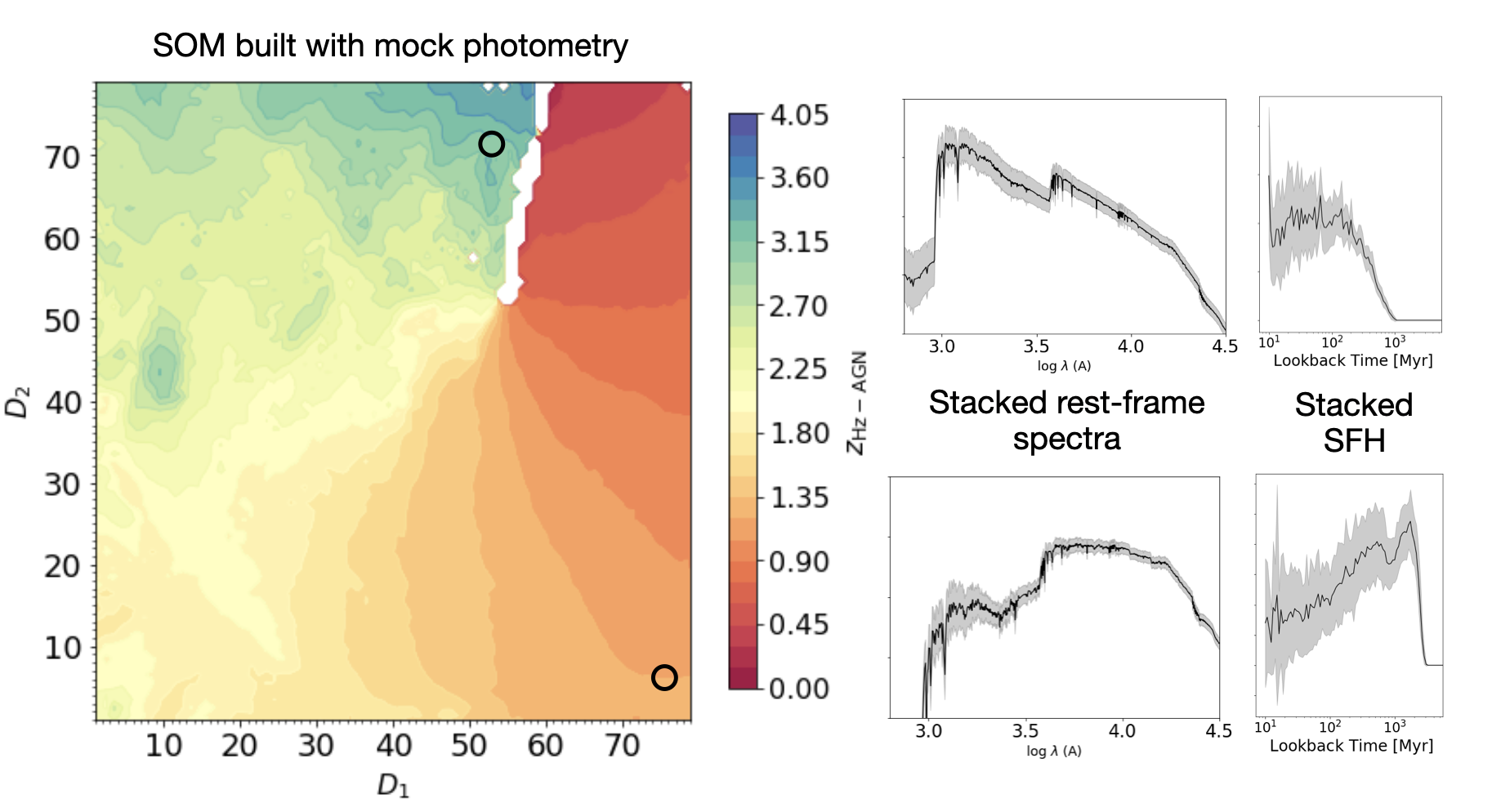We are inviting applicants for a postdoctoral position at the Institut d’Astrophysique de Paris to work with Clotilde Laigle and H.J.McCracken in close collaboration with Laure Ciesla and Olivier Ilbert (Laboratoire d’Astrophysique de Marseille). The contract is supported by the IPI. Here is the AAS job register posting.
More information
Background: In the next decade, the amount of data on galaxy properties will only continue to grow. The major challenge now facing astronomers is to unify all this data into a consistent scenario of galaxy evolution throughout cosmic time. Each process shaping galaxy transformations acts at a privileged epoch and at a specific timescale and therefore could imprint a specific signature (multiple bursts, decreasing slopes, etc.) in the star-formation history encoded in galaxy spectra. However, commonly used template-fitting codes fail at reliably isolating these features when only multi-band photometry is available because in these big datasets of intermediate to low signal-to-noise ratio they are limited by input models. The aim of this project is to make a major step forward by developing a new method to reconstruct and study the distribution of star-formation histories, and, ultimately, address this long-standing question: What triggers dramatic changes in galaxy star-formation-history? To tackle this question, the postdoc will rely on the expertise of our group to explore new techniques involving state-of-the-art statistical methods and machine learning algorithms. Very promising preliminary results indicate that these techniques are able to optimally exploit the information contained in optical to IR colours without requiring overly simplistic assumptions.

The self-organizing map (SOM) is a potentially powerful technique to separate galaxies with different star-formation histories. The SOM on the left panel has been built with broad-band photometry from mock simulated galaxies. Galaxies which fall in the same cell share very similar photometry. We show on the right panel that they also share similar SFH.
Datasets: The postdoc will rely first on the recently released ultra-deep COSMOS2020 catalogue twice the redshift precision of any currently existing photometric catalogues. The postdoc will then apply the optimized method of SFH extraction on the two primary Euclid Deep calibration fields,which will cover at least 20 square degrees on the sky. On these fields, complementary data of very high quality will be available through the Cosmic Dawn survey to improve the precision of the redshifts and to probe the distant universe.
Qualifications, how to apply: Applicants must hold a PhD degree by the start of the contract. We look for applicants with experience in galaxy formation and evolution and the analysis of observational data. Having experience with machine learning is particularly welcome but not mandatory. Applications must be submitted through the CNRS portal (https://emploi.cnrs.fr/Offres/CDD/UMR7095-CLOLAI-001/Default.aspx?lang=EN) and include a cover letter, a research proposal summarizing past and ongoing research directions (max 4 pages), a CV and publication list. In addition, names and email addresses of two to three references must be provided. Applications will be reviewed beginning January 15th, 2022, and the position will remain open until filled. The candidates selected for interview will be contacted by email. Informal enquiries to Clotilde Laigle.